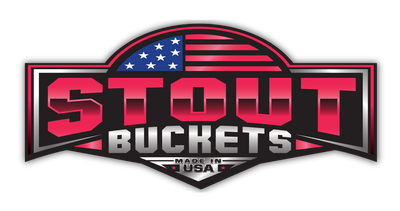Understanding Hydraulic Flow for Skid Steer Attachments

Behind every powerful skid steer attachment is a carefully tuned hydraulic flow system affecting its performance. Whether you’re breaking ground or grinding stumps, hydraulic flow for skid steer attachments can help you get the most out of your equipment. This guide breaks down the essentials of hydraulic flow rates, setup, and maintenance to keep the skid steer attachments running efficiently.
Skid Steer Flow Rates
Hydraulic flow rates dictate both the types of attachments the skid steer can use and how effectively the attachments perform.
Standard
Most skid steers come equipped with standard flow hydraulics, operating in a range of 18–25 gallons per minute (GPM). Standard flow suits lighter attachments, such as buckets and certain trenchers, which require less hydraulic power.
If the attachments rely on basic operations without needing excessive torque or speed, standard flow is all you need. It’s cost-effective and readily available but has limitations for power-hungry tools.
High Flow
With GPM boosted to 26–40, this option supports a wider range of attachments. It delivers the extra power needed for heavy-duty equipment like skid steer augers and stump grinders.
Whether you’re drilling deep post holes or tackling tough tree stumps, high flow gives skid steers the strength they need for demanding tasks.
Enhanced High Flow
With flow rates exceeding 40 GPM, this technology pushes hydraulics to the next level. For industrial-grade applications like large-scale land clearing with heavy-duty brush cutters, it’s an essential feature. It provides exceptional power and speed but demands a significant investment in equipment designed to handle these intense requirements.
Setting Up Hydraulic Flow Settings Correctly
Each skid steer attachment has unique hydraulic requirements, making it critical to follow the manufacturer’s guidelines for setup.
Begin by checking the specifications for your attachment. Does it require standard, high, or enhanced high flow? Ensure your skid steer’s system matches these requirements.
Incorrect flow settings can lead to poor performance or even damage to your equipment. Adjust your controls to the recommended GPM and PSI (pressure per square inch) settings for the attachment before use.
Some skid steers allow for automatic hydraulic calibration through onboard interfaces, while others may require manual adjustments. Always double-check connections to ensure they are clean, secure, and positioned correctly. A small leak or improper connection can disrupt hydraulic efficiency and longevity.
How Different Attachments Use Hydraulic Flow
Skid steer attachments rely on varying flow rates to perform specific tasks. Matching the flow rate to your tool’s requirements ensures optimal performance and reduces unnecessary wear.
Post Hole Diggers

High flow is a game changer for skid steer augers, making it easier to dig deep, clean holes even in tough soil. These attachments rely on steady hydraulic flow to power the auger bit effectively. Without enough flow, the post hole digger might struggle, leaving you turning dirt instead of digging deeper into the ground.
Stump Grinders
Designed to pulverize stubborn tree stumps into manageable mulch, these tools thrive on high flow. Their powerful, rotational cutting makes them essential for land clearing, but consistent hydraulic pressure is key to achieving precise, effective results. Enhanced high flow boosts efficiency, especially for large grinders.
Buckets
Among the most versatile skid steer attachments, buckets excel with standard flow hydraulics. From scooping soil to transporting debris, they deliver consistent performance with reliable hydraulic output. For added functionality, specialty buckets equipped with grapple attachments may benefit from high flow settings.
Trenchers
When precision meets hydraulics, trenchers become the go-to tool for carving consistent trenches for utilities or irrigation. Smaller trenchers operate well with standard flow systems, while harder ground requires the torque boost provided by high flow. Regularly checking blade and chain wear is essential when tackling tough materials.
Brush Cutters
Dense vegetation and small trees are no match for brush cutters. Large models designed for major land-clearing projects perform the best with high-powered hydraulic systems. Using insufficient flow for these tools can strain both the skid steer and the cutter, significantly reducing efficiency.
Snow Blowers
Efficient snow removal depends on hydraulic flow, which powers both the blower and its directional controls. High or enhanced flow rates are essential for clearing paths and driveways effectively. Operating a snow blower with inadequate flow reduces its throwing power and overall capacity. This makes it less effective during heavy snowfall.
Keeping Hydraulic Flow Working Right
Regular maintenance of hydraulic flow systems is essential for reliable skid steer performance. Ignoring maintenance can lead to costly repairs, unexpected downtime, and reduced efficiency. By addressing key areas of your hydraulic system, you can keep your equipment running smoothly and avoid common issues.
Filter Changes
Hydraulic systems need clean oil to operate effectively. Dirty or clogged filters allow harmful contaminants to circulate, which can damage sensitive components like pumps, valves, and cylinders. Over time, contamination reduces system efficiency and increases the likelihood of breakdowns.
Make it a priority to change your filters at the intervals recommended by the manufacturer. Always keep spare filters on hand to minimize downtime, especially if the equipment operates in dusty, dirty, or high-demand environments.
Clean and Secure Connections
Dirt, grime, or loose couplers can restrict hydraulic flow, reduce the effectiveness of the attachments, and increase wear on the system. Before every use, inspect all hydraulic fittings closely for signs of dirt, wear, or leaks. Clean connections thoroughly with a lint-free cloth, and ensure all couplers are securely fastened to prevent leaks or contamination.
Hydraulic Fluid Viscosity
In colder conditions, using a hydraulic fluid with a viscosity that’s too low can cause the system to operate sluggishly and inefficiently, as the fluid thickens and restricts flow. Conversely, in hot climates, high-viscosity fluids may overheat and lead to increased wear on components.
Always check your equipment manual for the recommended viscosity range and select fluids that suit your operating environment. If you frequently work in extreme weather, consider seasonal fluid changes to optimize performance year-round.
Maximize Your Skid Steer’s Potential

Understanding hydraulic flow for skid steer attachments is key to getting the most out of your machine. By learning about flow rates and properly setting up attachments, you can unlock the machine’s full potential.
For skid steer attachments that tackle your toughest jobs, shop at Stout Buckets. Built for durability and performance, our tools help you work smarter and more efficiently every time. Explore our collection today and upgrade your machine to handle any challenge.


